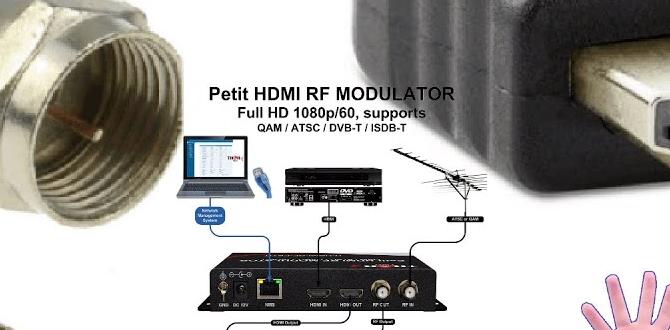Quick Summary: A car battery core charge is a deposit you pay when buying a new battery to encourage the return of your old one. This deposit is fully refunded when you bring your old battery back, promoting recycling and reducing waste. It’s a crucial part of responsible battery disposal.
Core Charge Fee: Essential Battery Knowledge for Everyone
Ever bought a new car battery and noticed an extra fee you weren’t expecting? That’s the core charge. It might seem confusing or even a little unfair at first, but it’s actually an important part of how we handle old car batteries. Don’t worry, it’s not a hidden cost to stress about. It’s a simple system designed to be fair to you and good for our planet.
This guide will break down the core charge fee, explaining exactly what it is and why it exists. We’ll cover everything you need to know, from why your old battery is valuable to how you get your money back. We’ll make sure you feel confident about batteries, whether it’s for your car, your phone, or a handy power bank. Let’s dive into the essential battery knowledge that makes a difference!
What Exactly is a Car Battery Core Charge?
Imagine buying a new tool, and the store asks you to pay a small extra amount until you bring back your old, broken tool. That’s pretty much what a core charge is for car batteries. It’s a deposit placed on a new part to ensure the old part gets returned.
When you buy a new car battery, the store adds a core charge to the total. This fee is there because your old battery isn’t just trash; it’s a valuable resource. It can be rebuilt or recycled to make new batteries. The store adds the core charge to encourage customers to bring back their used batteries instead of just throwing them away.
Once you return your old battery, the store gives you that core charge money back. It’s a simple way to promote recycling and make sure valuable materials don’t end up in landfills.
Why Do We Have Core Charges? The Environmental and Economic Reasons
The core charge system isn’t just about getting old batteries back; it serves some really important purposes:
- Environmental Protection: Car batteries contain lead and sulfuric acid, which can be toxic if not disposed of properly. Recycling them prevents these harmful substances from polluting our soil and water. The core charge is a powerful incentive to ensure batteries get to recycling facilities.
- Resource Conservation: Batteries are made of valuable materials like lead, plastic, and electrolytes. Recycling allows these materials to be recovered and reused, reducing the need to mine for new raw materials. This saves energy and reduces the environmental impact of extraction.
- Cost Savings: Reusing components from old batteries can make producing new batteries cheaper. The core charge helps fund this recycling and rebuilding process, contributing to more affordable replacement batteries in the long run.
- Sustainable Practices: It’s part of a larger effort towards a circular economy, where materials are kept in use for as long as possible, extracting maximum value and then recovering and regenerating products and materials at the end of each service life.
According to the U.S. Environmental Protection Agency (EPA), over 99% of lead-acid batteries are recycled, thanks in large part to this established system.
How Much is a Typical Core Charge?
The amount of the core charge can vary slightly depending on the type of battery and the retailer, but it’s generally quite consistent. For most standard automotive batteries, you can expect a core charge to be somewhere between $15 and $30.
This amount is usually clearly stated on your receipt when you purchase the new battery. Don’t see it? Ask the store associate. They should be able to explain it to you.
How Do You Get Your Core Charge Refund? It’s Easier Than You Think!
Getting your core charge refund is usually straightforward. The most common way is by returning your old battery to the place where you bought the new one. Here’s how it typically works:
- Keep Your Receipt: This is your proof of purchase and shows that you paid the core charge. Some stores might ask for it when you return the old battery.
- Bring Your Old Battery Back: Within a certain timeframe (usually 30 to 90 days, but check with your retailer), bring your old car battery back to the store.
- Provide Proof of Purchase: Hand over your receipt or other proof that you bought a new battery from them recently.
- Receive Your Refund: The store will inspect your old battery to ensure it’s a standard lead-acid battery (not cracked or tampered with) and then issue your refund. This might be in cash, or they might credit it back to your credit card if you paid that way.
Some auto parts stores, like AutoZone or O’Reilly Auto Parts, have made this process incredibly simple and often give you the refund at the time of purchase for the new battery if you bring your old one in upfront.
What if You Don’t Have the Old Battery?
If you can’t return your old battery, you simply forfeit the core charge amount. It’s essentially a fee you pay for not participating in the recycling program. While it feels like an extra cost, remember that the system is designed to make responsible disposal easy and accessible.
Beyond Car Batteries: Core Charges and Other Power Sources
While the core charge is most common for car batteries, the idea of a deposit for returnable items isn’t unique. Let’s look at other battery-related items and how their “end-of-life” or replacement works, even if they don’t have a formal core charge:
Phone Batteries
Unlike car batteries, phone batteries are typically sealed inside the device and not designed for easy user replacement, at least on many modern smartphones. When a phone battery degrades, you usually have a few options:
- Official Replacement: Take your phone to the manufacturer or an authorized service center. They will replace the battery and usually handle the old one responsibly. There’s a cost involved, but it covers the service and disposal.
- Third-Party Repair Shops: Independent shops can also replace phone batteries. It’s often cheaper, but ensure they have a good reputation and a plan for recycling the old battery.
- DIY Replacement (for older models): If you have an older phone or a specific model designed for user-replaceable batteries, you can buy a new battery and change it yourself. For disposal, look for local e-waste recycling centers or battery drop-off points.
While there isn’t a “core charge,” responsible e-waste recycling programs are crucial for managing old phone batteries. Many retailers and local governments offer these services.
Power Banks and Portable Chargers
Power banks are essentially rechargeable battery packs. When a power bank reaches the end of its life (it doesn’t hold a charge as long as it used to), you have a few disposal options. Many electronics retailers have recycling bins for small electronics, and e-waste collection events are common. Some manufacturers might offer take-back programs.
When buying a new power bank, there’s no core charge. The cost covers the device itself. It’s up to the consumer to ensure the old one is recycled properly.
Adapters and Chargers
Power adapters and chargers for phones, laptops, and other devices don’t typically have core charges. When they break or become obsolete, they should be treated as electronic waste. Many e-waste recycling programs accept these items, ensuring that any valuable components are recovered and hazardous materials are handled safely.
Understanding Battery Types and the Core Charge
The core charge specifically applies to traditional lead-acid car batteries. These are the most common type of battery used in gasoline and diesel vehicles. When you purchase a replacement for your car, it will almost always involve a core charge.
Newer technologies in vehicles, like hybrid and electric cars, use different types of batteries (e.g., lithium-ion). These batteries have different recycling processes and often don’t involve a direct consumer core charge in the same way. The costs and processes for recycling these high-voltage batteries are more complex and are typically managed by specialized recyclers and manufacturers.
What Happens to Your Old Battery After You Return It?
Your returned battery embarks on an important journey!
- Collection: Retailers collect old batteries from customers.
- Transportation: Specialized recyclers pick up these batteries from retailers.
- Processing: At the recycling facility, batteries are safely broken down. The lead components (which are about 60-80% of the battery’s weight) are recovered. The plastic casing is shredded, and the sulfuric acid is neutralized and processed.
- Recycling and Rebuilding: The recovered lead is melted down and purified. This lead is then used to manufacture new battery plates. The plastic is processed into pellets to make new battery casings. Even the acid can often be purified and reused.
This closed-loop system means that materials from your old battery can end up in a brand-new battery, minimizing waste and the need for new mining. Companies like Interstate Batteries highlight their commitment to recycling and the high percentage of recycled materials in their new products.
DIY Battery Replacement: Safety First!
If you’re comfortable, replacing your car battery yourself can save you money and give you a sense of accomplishment. However, safety is paramount. Batteries contain corrosive acid and can produce explosive gases.
Tools You Might Need:
- Wrench or socket set (common sizes are 10mm, 13mm, and 15mm for terminals and hold-downs)
- Battery terminal cleaner or wire brush
- Protective gloves
- Safety glasses
- A way to transport the old battery (e.g., an old plastic bucket in case it leaks)
Safety Precautions:
- Turn off the engine and remove the key from the ignition.
- Wear safety glasses and gloves.
- Disconnect the negative (black) terminal first, then the positive (red) terminal. This prevents accidental sparks.
- Note the position of the hold-down bracket before removing it.
- Install the new battery in the same orientation as the old one.
- Connect the positive (red) terminal first, then the negative (black) terminal.
- Ensure all connections are tight and the battery is securely held down.
- Dispose of the old battery properly by returning it for your core charge refund.
If you’re unsure at any point, it’s always best to have a professional handle the replacement.
When to Replace Your Car Battery
Car batteries don’t last forever. On average, they need replacing every 3 to 5 years. Here are signs that your battery might be on its last legs:
- Slow Engine Crank: The engine sounds sluggish when you start it.
- Check Engine Light: Some battery issues can trigger this light.
- Dim Lights: Headlights or interior lights seem dimmer than usual.
- Old Age: If your battery is over 4 years old, it’s wise to get it tested.
- Corrosion: You see fuzzy, white, or bluish powder around the battery terminals.
- Swollen Battery Case: The sides of the battery case look bulging or distorted (this can be dangerous).
Most auto parts stores and mechanics can test your battery for free. This can help you avoid being stranded with a dead battery.
Table: Key Battery Types and Their End-of-Life Handling
| Battery Type | Typical Use | Core Charge Applicable? | End-of-Life Disposal |
|---|---|---|---|
| Lead-Acid (Automotive) | Gasoline/Diesel Cars & Trucks | Yes (Refundable Deposit) | Return to Retailer for Core Charge Refund & Retailer Recycling |
| Lithium-ion | Smartphones, Laptops, Electric Vehicles, Power Banks | No (Usually) | E-waste Recycling Centers, Manufacturer Take-Back Programs |
| NiMH (Nickel-Metal Hydride) | Some Power Tools, Older Hybrid Vehicles | No (Usually) | E-waste Recycling Centers, Consumer Battery Drop-off Programs |
| Alkaline | Remote Controls, Toys, Flashlights | No | Household Trash (in most areas, but recycling is preferred where available) |
It’s important to note that while alkaline batteries are common, proper disposal is still encouraged to keep heavy metals out of landfills. Check your local waste management guidelines.
Frequently Asked Questions (FAQ)
What is a car battery core charge?
A core charge is a refundable deposit added to the price of a new car battery. It’s designed to encourage you to return your old battery for recycling.
How much is a typical car battery core charge?
Most core charges for standard car batteries range from $15 to $30, though this can vary slightly by retailer and battery type.
How do I get my core charge refund?
You get your refund by returning your old car battery to the retailer where you purchased the new one, usually within 30-90 days. Keep your original receipt as proof of purchase.
Can I return any old battery for a core charge refund?
Typically, the core charge refund applies only when you return the old battery that came with the new one you purchased. The old battery must be a lead-acid type and not severely damaged or disassembled.
What if I don’t have the old car battery to return?
If you cannot return your old battery, you will forfeit the core charge amount. It will not be refunded.
What happens to old car batteries that are returned?
Returned batteries are sent to specialized recycling facilities. They are processed to recover valuable materials like lead and plastic, which are then used to make new batteries, conserving resources and protecting the environment.
Do phone batteries or power banks have a core charge?
No, phone batteries and power banks generally do not have a core charge. When they reach their end-of-life, they should be taken to e-waste recycling centers or designated drop-off locations.
Conclusion: Empowered by Battery Knowledge!
Understanding the core charge fee for car batteries might seem like a small detail, but it’s a great example of how simple systems can have a big impact. It’s a small deposit that ensures valuable, recyclable materials are kept out of landfills and given a new life, saving resources and protecting our environment.
You’ve learned what the core charge is, why it’s important, and how you can easily get your money back by returning your old battery. We’ve also touched on how other types of batteries, like those in your phone or power bank, have their own paths for responsible disposal, emphasizing the importance of looking for e-waste recycling options.
By knowing these basics, you feel more confident when buying a new battery, whether for your car or powering your devices. You’re equipped to handle battery replacements safely, understand where your money goes, and contribute to more sustainable practices. Keep this knowledge handy, and remember that simple steps can make a world of difference. Thanks for diving into essential battery knowledge with us!






